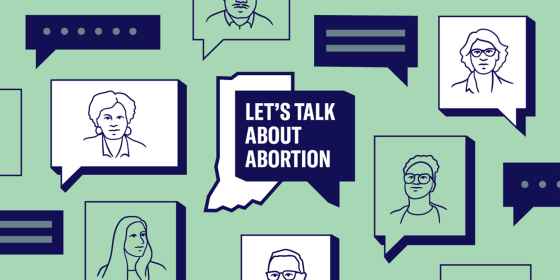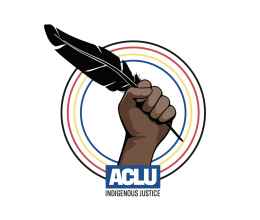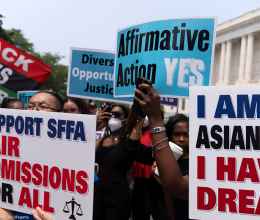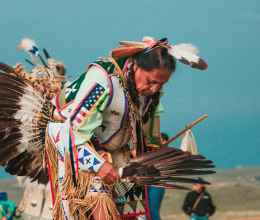Warning: This article discusses sensitive topics such as the misuse of human remains, funeral objects, and graves as well as cultural insensitivity and racism. American Indian remains will be referred to as ancestors.
Indigenous peoples of the Americas have been the victims of systematic discrimination in the past, which has included the taking of American Indian land, the denigration of American Indian languages and cultures, the isolation of Indigenous peoples on American Indian reservations, the denial of rights of citizenship, and efforts to remove or exterminate various tribes and peoples. The effects of this discrimination continue today.
This month Indiana became a hub for discussing accountability of universities, federal organizations, and museums as they work to return Indigenous ancestors and funeral artifacts to Native American tribes. The ongoing process of returning ancestors from Indiana, Illinois, and across the country is critical, and more must be done.
Earlier this month, Indiana University Bloomington (IU) and the Miami Tribe of Oklahoma jointly hosted the National Native American Graves Protection and Repatriation Act (NAGPRA) Review Committee meeting. Enacted in 1990, NAGPRA requires federal agencies and museums receiving federal funds to repatriate Indigenous cultural items, human remains, funerary objects, sacred objects, and objects of cultural patrimony to relevant descendants, American Indian tribes, Alaska Native Corporations, and Native Hawaiian organizations. This meeting aimed to assess the progress made in complying with NAGPRA.
Several institutions, including Indiana University Bloomington (IU), possess significant collections of indigenous ancestors, cultural artifacts, and funeral objects. Among many of the tribes and peoples historically connected to Indiana, Miami Tribe of Oklahoma expressed the profound significance of their ancestors. During the meeting, Scott Willard, the NAGPRA director for the Miami Tribe of Oklahoma, highlighted the long-standing mistreatment of their ancestors stating, "For 150 years, our ancestors have been treated like objects, play things... " Moreover, he expressed concerns over new attitudes, stating ancestors are now viewed as “throwaway items” Willard then emphasized "they need to be recognized as the flesh and blood human beings that walked these grounds.”
Cultural and Spiritual Significance
Native communities across North and South America, as well as Hawai'i, maintain deep cultural connections to their ancestors, sacred ceremonies, and gravesites. The ancestors, artifacts, and objects are not only culturally and spiritually important but should also be acknowledged for the inherent value they hold in terms of human life, land, and possessions. It is crucial to recognize that some of these ancestors are grandparents to living individuals.
Regardless of one's cultural background, it is difficult to fathom the loss experienced when one's grandparents are stolen from their resting places, confined to boxes, and stored in institutional basements for examination, testing, or neglect.
Presentations and Challenges According to Institutions
Indiana University started its NAGPRA office twenty-one years after NAGPRA went into effect. A year after that, IU had its first consultation with four tribal nations. During the NAGPRA committee meeting, the NAGPRA office of IU revealed the challenges faced in inventory completion, particularly regarding the accurate allocation and minimum count of ancestors. An example of the tedious work given was that the office would have to use a funnel bone to search for human remains.
The process of examining buried items places logistical and spiritual burdens on tribal nations, emphasizing the necessity of an appropriate documentation process to alleviate these concerns as pointed out by the representative of the IU NAGPRA office. While IU's NAGPRA office successfully repatriated 700 ancestors, it is essential to understand that this should be the minimum standard. Even after this big project, reports suggest that IU may still have approximately 4,000 ancestors in their possession, indicating the need for increased funding for the NAGPRA office, according to ProPublica. Tribal representatives and native speakers from the meeting stressed that many tribes do not have adequate funding nor staff to safely transport these ancestors back home. They argue institutions should bear the responsibility of repatriation to honor tribal nations' wishes.
These circumstances highlight the urgent need for increased NAGPRA funding and improved coordination between federal facilities, non-federal facilities, and tribal nations to ensure effective implementation of NAGPRA, according to multiple representatives from the meeting. Adequate financial resources and enhanced reporting mechanisms are essential to expedite the repatriation process and honor the rights of Indigenous communities. By addressing these challenges, state, private, and federal facilities can work towards a timely and comprehensive resolution, respecting the cultural heritage and dignity of Indigenous ancestors and communities.
Native Voices
During the NAGPRA Review Committee Meeting, Marie Richards of The Sault Ste. Marie Tribe and Donna Chrisjohn of the Sičháŋǧu nation and Diné people emphasized the importance of engaging with tribal nations across the country, not solely those residing in a specific state. Richards specififcally highlighted the importance of tribal consulation, stating “our pre-contact past is controlled by archaeological understanding that was developed without talking to the tribes and excluding us, and even at times dismissing what we have to say.”
Both highlighted that Indigenous peoples traversed the United States pre-contact and were moved post-contact, resulting in ancestors resting across various regions. They both pointed out that inclusive consultation with a wide range of tribes is essential to ensure comprehensive repatriation efforts. Additionally, Chrisjohn expressed her concern regarding the exorbitant funding requests by large institutions, stating that it is unacceptable that over $200 million and 26 years is needed for any significant progress in NAGPRA compliance. Considering that the act has been in place for 33 years, such prolonged delays are concerning and hinder the timely return of ancestral remains and cultural artifacts to Indigenous communities.
Advocacy Efforts
During the meeting, Timothy McKeown, a repatriation consultant and NAGPRA committee member stated that the stealing of Native American cultural items, human remains, funerary objects, sacred objects, and objects of cultural patrimony is not “a Native American concern, it’s a world concern.”
The NAGPRA review committee clarified during the meeting that members of Congress possess the ability to address the issue of federal funding and investigating institutional compliance. The review committee encourages individuals to write to their respective congressmen. Organizations such as the National Association of Tribal Historic Preservation Officers, the Association for American Indian Affairs, the National Congress of American Indians, and the American Alliance of Museums Society for American Archaeology are actively engaged in lobbying efforts to support these causes.
Indigenous peoples and their governments have suffered discrimination and injustice at the hands of the United States since the country’s founding, yet contemporary civil rights discussions all too often ignore their rights.
In the pursuit of justice and equality, Hoosiers must stand alongside Indigenous communities and advocates for the repatriation of Indigenous ancestors and cultural artifacts. By amplifying the voices of Indigenous communities and advocating for their rights, we can ensure the proper recognition, preservation, and respect for their cultural heritage. Let us unite in our commitment to justice for all.
ACLU of Indiana recognizes we sit on the homelands of the Shawnee, Miami, Wea, Potawatomi, Delaware, Wyandot, Kickapoo, Piankashaw, Chickasaw peoples (Saawanwa, Myaamiaki, Waayaahtanwa, Bodwéwadmik, Lënape, Wyandotte, Kiikaapoa, Peeyankihšiaki, Chik’asha Ashachi) and other Indigenous peoples that go unrecognized.








